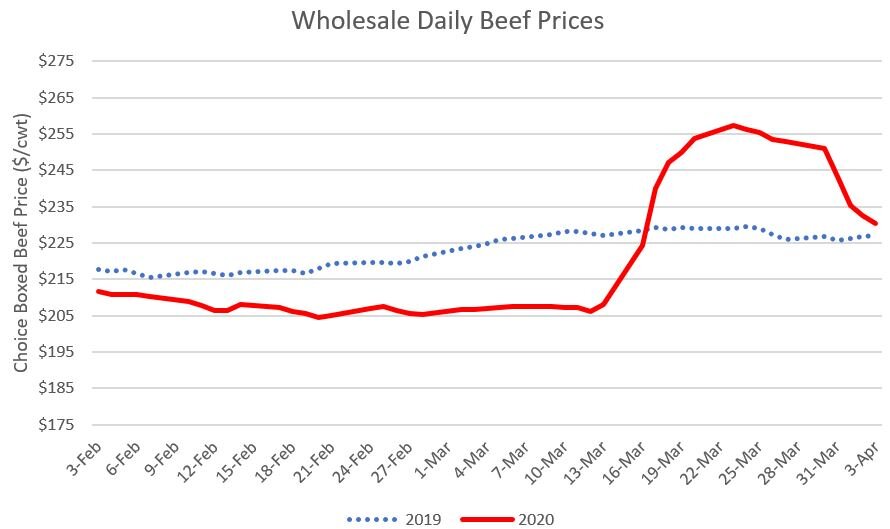That is the tile of a new paper with Trey Malone and Aleks Schaefer, both at Michigan State University. Here is the abstract:
“This article uses evidence from the egg industry to investigate how the shift from food-away-from-home and towards food-at-home affected the U.S. food supply chain. We find that the onset of the COVID-19 pandemic increased retail and farm-gate prices for table eggs by approximately 141% and 182%, respectively. In contrast, prices for breaking stock eggs-which are primarily used in foodservice and restaurants-fell by 67%. On April 3, 2020, the FDA responded by issuing temporary exemptions from certain food safety standards for breaking stock egg producers seeking to sell into the retail table egg market. We find that this regulatory change rapidly pushed retail, farm-gate, and breaking stock prices towards their long-run pre-pandemic equilibrium dynamics. The pandemic reduced premiums for credence attributes, including cage-free, vegetarian-fed, and organic eggs, by as much as 34%. These premiums did not fully recover following the return to more “normal” price dynamics, possibly signaling that willingness-to-pay for animal welfare and environmental sustainability have fallen as consumers seek to meet basic needs during the pandemic. Finally, in spite of widespread claims of price gouging, we do not find that the pandemic (or the subsequent FDA regulatory changes) had a meaningful impact on the marketing margin for table eggs sold at grocery stores.”
We tried to tease out the effect of the pandemic itself on egg prices from the impact of FDA rules that barred eggs from easily moving from the restaurant to the grocery market. Here’s what we find on that latter point.
“These results suggest that had the FDA not suspended Egg Safety Rules for breaker producers seeking to sell into the table eggs market - farm-gate and retail table egg prices would have been approximately 53% and 56% higher than those observed in the last week of May. On the other hand, breaking prices in the same week would have been about 50% lower.”
The key results as they related to impacts on commodity egg prices are shown in the following graphs (the dashed lines are our forecasts of what would have happened had COVID19 not occurred).
You can read the whole paper here.











